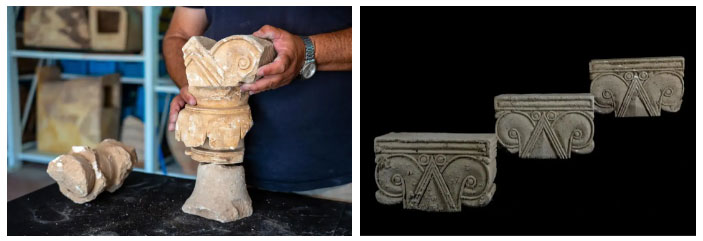Archaeologists in Jerusalem have found what they believe is an ancient toilet. This toilet is estimated to be about 2,700 years old.
South China Morning Post reported that the Israel Antiquities Authority announced the discovery of an ancient toilet about 2,700 years old. This toilet is located in an area that was once a magnificent royal residence dating back to the 7th century BC.
 This toilet is located in an area that was once a magnificent royal residence.
This toilet is located in an area that was once a magnificent royal residence.
This toilet has a square block of limestone perforated in the middle, similar to a toilet. Below is a septic tank carved from rock.
You may ask, why is there a stone pillar with a hole in it that is a toilet? Because archaeologists also discovered a septic tank dug from the limestone foundation under the basin.
However, due to insufficient funding, the excavation work could not be completed at that time, so only a part was excavated. Although the toilet and septic tank were not completely excavated, Billig estimates the area of the toilet to be about 1.5 x 2 meters, roughly the same size as a modern toilet.

Billig’s team also found a toilet seat in situ, but the seat was not the plastic or acrylic commonly used in modern times, but the same material as the toilet: limestone . “It’s not unreasonable to have such an elaborate carving like this, but having to sit on it to go to the bathroom,” said Yaakov Billig.
As mentioned before, the toilet was found in the palace, a “royal building” dating back to the Iron Age. The palace’s pillars are engraved with symbols of Jewish kings.
 Some of the elaborate pillars are carved with symbolic meanings of the Jewish monarchy.
Some of the elaborate pillars are carved with symbolic meanings of the Jewish monarchy.
According to excavation director Yaakov Billig, this is a very rare and ancient discovery. “Only rich people at that time could afford to build toilets ,” Mr. Billig said.
“It is interesting to see that something as common to us today as a toilet was a luxury item in the time of Judea ,” added Israel Antiquities Authority Director Eli Eskosido.

Archaeologists also found clay pots and animal bones from the time of Solomon’s Temple (the first Jewish temple) in the cesspool. According to a spokesman, scientists are still analyzing what was recovered from the hole.

Through this, researchers hope to gain more information about the diet of people at that time as well as the diseases that affected the ancient world.
The first Jewish temple, built by King Solomon, was destroyed by King Nebuchadnezzar of Babylon in 586 BC. The temple was rebuilt and remodeled (the second Jewish temple) but was further destroyed by the Romans in AD 70.

Today, only the walls of the second temple remain. These walls are often called the Wailing Walls and are the most important holy sites in Judaism.





